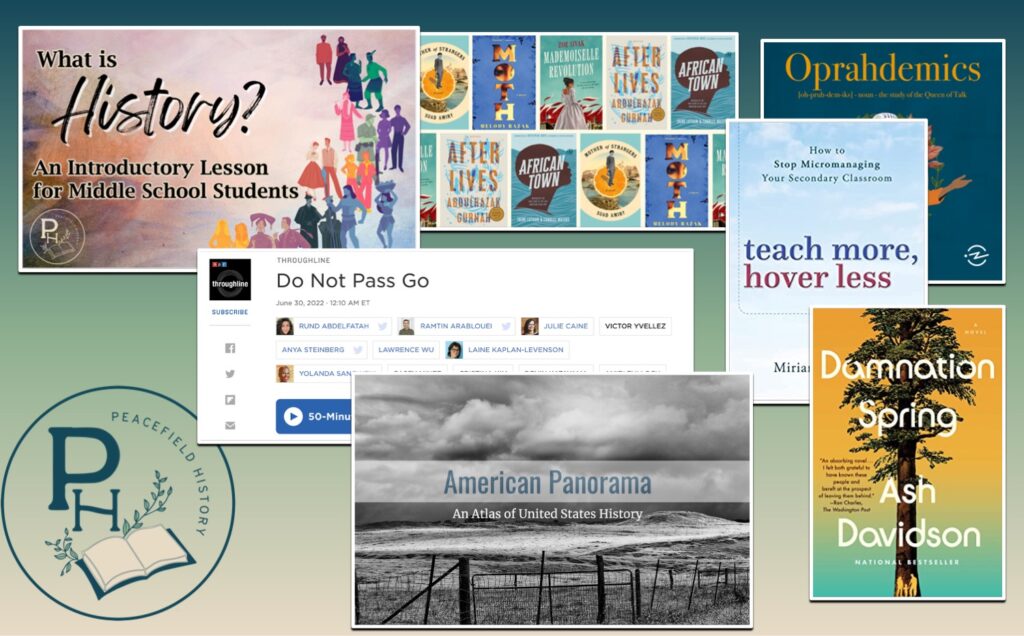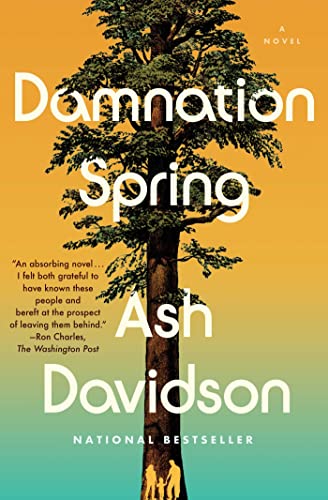
Welcome back to another Loves, Links, Reads, and Reviews – the monthly link roundup where I post my best Social Studies related finds from the internet and discuss all that I’ve been up to in the past month. Below is my list for July 2022.
I feel like some of you have already returned back to school for the fall, however, us NY teachers are still knee deep in summer. We’ve reached that sticky part of summer here. The humidity clings to us the second we go outdoors and the bugs have crept into the garden to munch on all the greenery. I’m trying to appreciate this time, but I wouldn’t mind an occasional breeze.
Loves and Links
I absolutely, positively skipped my post for the month of June. I figured that most of us were on summer break and I really needed the break also.
American Panorama – One of my group members (in the Middle School Social Studies Group) posted a link to this incredible collection of interactive maps. The maps are complex, but with structure, they could really lead to a fantastic educational experience. I’ve already incorporated the photogrammar map into a lesson about the Great Depression!
15 Standout Historical Fiction Books to Read this Year – I haven’t been able to complete much “fun” really at all this year. I’ve been reading a bunch for academic and research purposes, but not much for myself. When I finally get the chance to pick a new book for myself, it will probably come from this list.
Oprahdemics – Did you watch Oprah every day after school when you were growing up? Okay, well I did, and her show was a big part of my awareness of the world and my reading life for a good number of years. This podcast popped up on my radar this past month, and I was instantly hooked! It is so well done, and it dives into so many topics that connect to history and Social Studies. If you were an Oprah fan back in the day, it’s definitely worth a listen.
Creating a Classroom That Is Student, not Teacher, Driven – I really appreciated this post about creating a classroom that is more student focused. I’m definitely a “hoverer,” and I’d like to do less of that. I’ve noticed that my hovering and my tendency to answer questions as fast as possible only seems to encourage student helplessness. It’s something I’d like to work on in the fall, so I need to pick up this book. – Teach More, Hover Less
Do Not Pass Go – Do you know the origins of the Monopoly Game? I knew it was originally a game about landlords, but I didn’t know much beyond that. This podcast dives deep into the origins of the early versions of the game, and how the original creator (Elizabeth Magie) was inspired to create the game after reading Henry George, and was never given credit for her idea.
The Importance of Unplugging for Educators – This is a short little post from Liz Evans, but it could not be more true. One of my main promises I’m making to myself this year is to keep my school email off my dang phone and to stay off my computer after 8 pm in the evenings. It seems like obvious common sense. However, I know that I’ve previously failed to adhere to this boundary in the past and it only contributed to my stress. I know that as I return this fall, I will strive to be a better boundary keeper and hopefully a better educator as a result.
Peacefield History posts from this past month…
I have been deep in research for the past few months as I create curriculum for the second half of U.S. History. I have a plethora of goals that make this process more arduous but also more rewarding. I don’t want to create resources that are just a variation on a resource that already exists. I also know that a good portion of what’s out there doesn’t really meet the needs of today’s student. With each resource I create, I think about the following:
I strive to create resources that are truly for middle school students. I incorporate cooperative learning, visuals, and differentiation, while also recognizing their limits for reading and new vocabulary.
Historical thinking, primary sources, and inquiry also make their way into every lesson possible. I really want to be more explicit with how historians approach history, so I created this lesson.
What is History? – An Introductory Lesson for Middle School Students – This slideshow explains the how historians write history. (I also include a minor rant about the needless separation of primary and secondary sources.) Then, I have students evaluate individual sources for their reliability with an engaging activity that gets students out of their seats. Finally, students sort several source descriptions relating to one specific topic. You can grab a free copy by clicking the link.
New Resources
The American West – Vocabulary Word Wall – This resource includes 27 word wall terms related to the American West, vocabulary review strategies, and a review puzzle to support student learning.
Native Americans and the West – Students will learn about the major events involving Native Americans in the west in the late 1800s. This lesson focuses specifically on the Sioux Native Americans and those tribes that were allied with the Sioux. Teachers may choose to incorporate this lesson with A Cheyenne Odyssey – a free online Mission-US game – however, this lesson can be utilized with or without gameplay.
The American West Project Assessment – With this assessment, students will evaluate the events they discussed relating to the West in the late 1800s, generate three adjectives to better describe the west than just “wild,” and then use evidence from the unit to describe their reasoning on a one-page assessment.
The American West – Full Unit Bundle with pacing guide! – This is the full unit bundle, with all of the resources above!
The Annexation of Hawaii – Students will analyze three different points of view discussing the annexation of Hawaii and draw conclusions.
The Spanish-American War – With this interactive lesson, students will learn about the major events of the Spanish-American War, examine the influence of yellow journalism on newspapers, and experience the newsie strike by becoming a newsie in 1899.
An Introduction to Imperialism – Students learn about the reasons behind the Era of Imperialism through cartoon analysis. Students will also label the major territories acquired during the era.
The Open Door Policy, the Panama Canal, and the Roosevelt Corollary Imperialism – This lesson offers a basic of some of the major events of the era of U.S. Imperialism. The Open Door Policy, the Boxer Rebellion, the development of the Panama Canal, and the Roosevelt Corollary are all included.
The Annexation of the Philippines – Students sort primary resources about the annexation of the Philippines and assess their reliability.
Imperialism Word Wall – Help your students build and retain key vocabulary terms with a visually appealing word wall. This resource includes 21 word wall terms related to the Era of Imperialism, vocabulary review strategies, and a review puzzle to support your students’ learning.
Imperialism – Review and Assessment – This includes two different versions of an assessment for the 5 lessons in my Era of Imperialism unit and a review worksheet for the entire unit.
Imperialism – Full Unit Bundle with pacing guide! – This is the full unit bundle, with all of the resources above!
I’ve also started to work on my Great Depression unit. More resources will be forthcoming in August!
Hardships of the Great Depression – Photographic Analysis and Primary Sources – With this activity, students will analyze images from the Great Depression to learn about the lives of the people who lives through that time. They will explore the context that photographs can provide to an era and the limitations of that photography. This presentation also discusses the onset of the Great Depression, Herbert Hoover, and the Bonus Army.
Reads and Reviews
Damnation Spring
Series: Reads and Reviews, Reads and Reviews - July 2022
Genre: Historical Fiction - Adult
Tag: Recently Read
Although one could never say that there is one way to write historical fiction, this book certainly does it correctly. The core of this story is a group of families living along the California coast in the 1970s. The men work in the logging industry while the women raise the families. At first the story seems to focus just on the families, however, the early environmental movement, and the use of DDT gradually work their way into the plot in a way that feels natural and real. If you've been a bit perplexed by the popularity of Where the Crawdads Sing, you might prefer this book instead.
More info →


